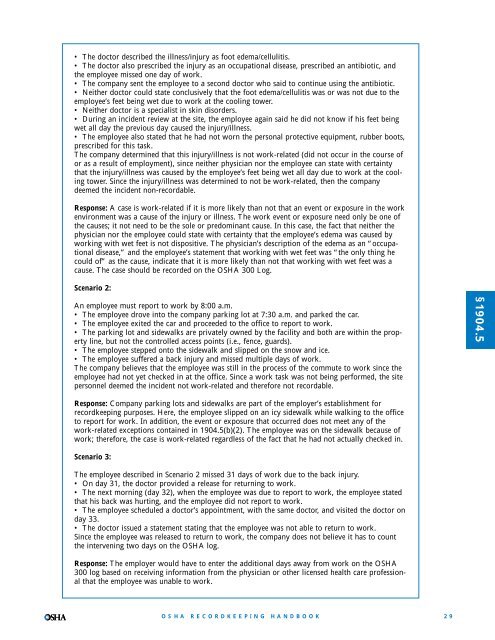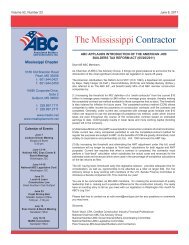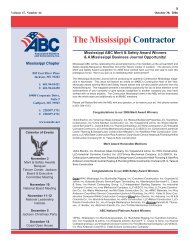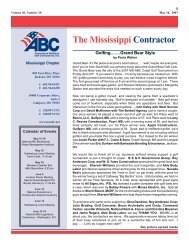OSHA Recordkeeping Handbook - Msabc.net
OSHA Recordkeeping Handbook - Msabc.net
OSHA Recordkeeping Handbook - Msabc.net
Create successful ePaper yourself
Turn your PDF publications into a flip-book with our unique Google optimized e-Paper software.
• The doctor described the illness/injury as foot edema/cellulitis.• The doctor also prescribed the injury as an occupational disease, prescribed an antibiotic, andthe employee missed one day of work.• The company sent the employee to a second doctor who said to continue using the antibiotic.• Neither doctor could state conclusively that the foot edema/cellulitis was or was not due to theemployee’s feet being wet due to work at the cooling tower.• Neither doctor is a specialist in skin disorders.• During an incident review at the site, the employee again said he did not know if his feet beingwet all day the previous day caused the injury/illness.• The employee also stated that he had not worn the personal protective equipment, rubber boots,prescribed for this task.The company determined that this injury/illness is not work-related (did not occur in the course ofor as a result of employment), since neither physician nor the employee can state with certaintythat the injury/illness was caused by the employee’s feet being wet all day due to work at the coolingtower. Since the injury/illness was determined to not be work-related, then the companydeemed the incident non-recordable.Response: A case is work-related if it is more likely than not that an event or exposure in the workenvironment was a cause of the injury or illness. The work event or exposure need only be one ofthe causes; it not need to be the sole or predominant cause. In this case, the fact that neither thephysician nor the employee could state with certainty that the employee’s edema was caused byworking with wet feet is not dispositive. The physician’s description of the edema as an “occupationaldisease,” and the employee’s statement that working with wet feet was “the only thing hecould of” as the cause, indicate that it is more likely than not that working with wet feet was acause. The case should be recorded on the <strong>OSHA</strong> 300 Log.Scenario 2:An employee must report to work by 8:00 a.m.• The employee drove into the company parking lot at 7:30 a.m. and parked the car.• The employee exited the car and proceeded to the office to report to work.• The parking lot and sidewalks are privately owned by the facility and both are within the propertyline, but not the controlled access points (i.e., fence, guards).• The employee stepped onto the sidewalk and slipped on the snow and ice.• The employee suffered a back injury and missed multiple days of work.The company believes that the employee was still in the process of the commute to work since theemployee had not yet checked in at the office. Since a work task was not being performed, the sitepersonnel deemed the incident not work-related and therefore not recordable.§1904.5Response: Company parking lots and sidewalks are part of the employer’s establishment forrecordkeeping purposes. Here, the employee slipped on an icy sidewalk while walking to the officeto report for work. In addition, the event or exposure that occurred does not meet any of thework-related exceptions contained in 1904.5(b)(2). The employee was on the sidewalk because ofwork; therefore, the case is work-related regardless of the fact that he had not actually checked in.Scenario 3:The employee described in Scenario 2 missed 31 days of work due to the back injury.• On day 31, the doctor provided a release for returning to work.• The next morning (day 32), when the employee was due to report to work, the employee statedthat his back was hurting, and the employee did not report to work.• The employee scheduled a doctor’s appointment, with the same doctor, and visited the doctor onday 33.• The doctor issued a statement stating that the employee was not able to return to work.Since the employee was released to return to work, the company does not believe it has to countthe intervening two days on the <strong>OSHA</strong> log.Response: The employer would have to enter the additional days away from work on the <strong>OSHA</strong>300 log based on receiving information from the physician or other licensed health care professionalthat the employee was unable to work.<strong>OSHA</strong> RECORDKEEPINGHANDBOOK29







